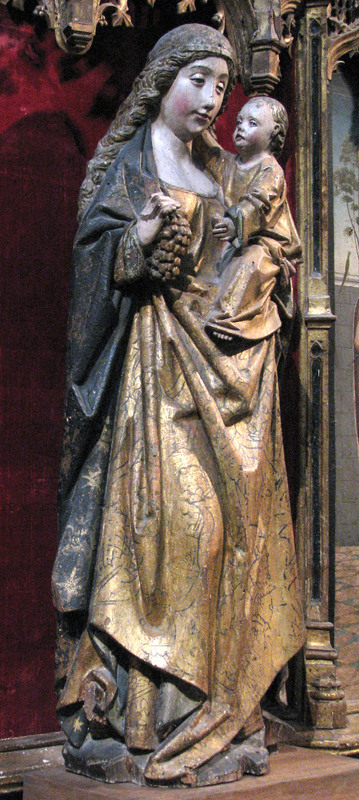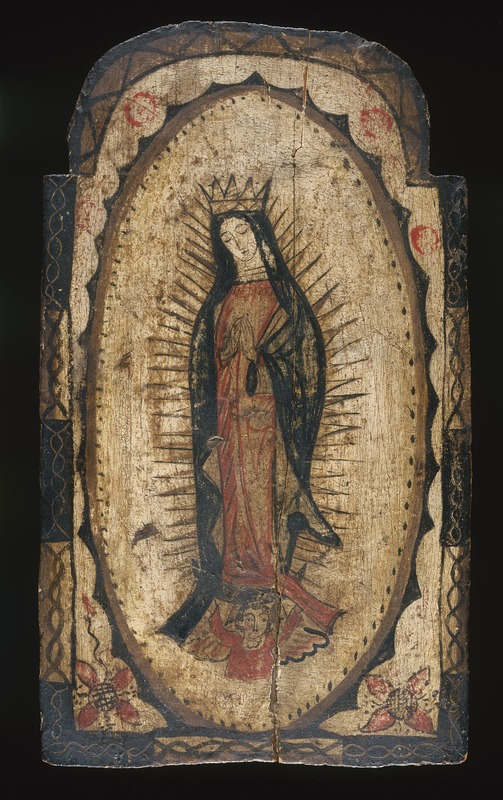Our Lady of the Apocalypse
The use of the Virgin Mary as a wartime saint led Spanish Catholics to associating her with the Biblical apocalypse. According to the New Testament the apocalypse was supposed to be a time where a new paradise is discovered after a period of war and destruction. For many Spaniards the discovery of the “New World” meant that the end times were upon them which is shown in Columbus’ journal entries. The idea that the conquest of Mexico and the rest of Latin America was the beginning of the apocalypse was cross cultural. Aztec religion told of a time in which their sun god Quetzalcoatl would return and take his throne back from the emperor, which some felt that the Spaniards invasion mimicked. However, this theory was quickly dispelled by Moctuzuma, the Aztec emperor at the time, who ran several spiritual tests on Cortés to ensure that he was not their returning god.
Miguel Sánchez’s (1594-1674) Imagen de la Virgen María published in 1648 was one of the first written accounts of the Juan Diego apparition, it also was the first analysis of Guadalupe’s appearance. In this analysis Sánchez compares Guadalupe to the woman of the apocalypse described by John in the Book of Revelation. John (12:1) stating: “arrayed with the sun, and the moon under her feet, and upon her head a crown of twelve stars.” This is similar to Our Lady of Guadalupe who is often depicted in a cloak covered in stars, with rays beaming from behind her, a crown atop her head, and a crescent moon beneath her. However, Guadalupe was not the first time that the Virgin Mary was depicted as the woman of the apocalypse, as shown in the Spanish statue of the Virgin and Child from the 1400s. In the statue she is shown in a blue star studded cloak and gold dress similarly to how later Our Lady of Guadalupe would be presented. The difference in the case of Our Lady of Guadalupe is that she physically appeared as the Our Woman of the Apocalypse to Juan Diego.

